Published on
This class will teach you how to scare people
Julia Hechtman’s Politics of Horror course combines film discussion with technical training in spooky lighting, sound and camera movement. At the end of the semester, students make a short film.
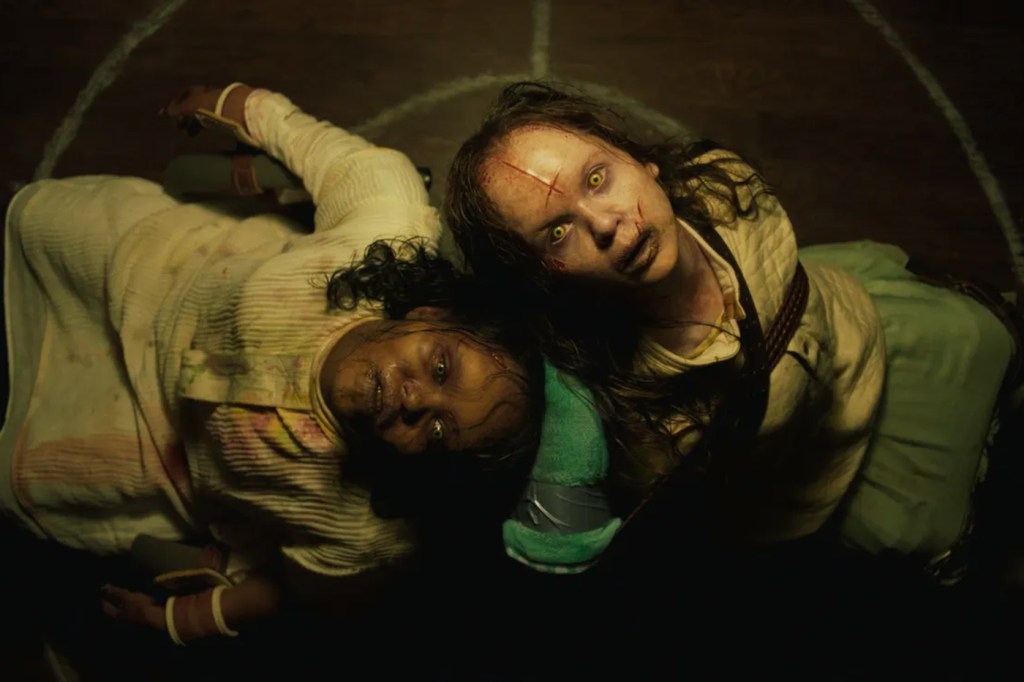
Julia Hechtman’s class is not scary. Her classroom is not scary, anyway.
She’s brought cupcakes, for one: pink-frosted and chocolate, vegan/gluten-free and regular. (“What are you supposed to call those?” she wonders aloud. “Gluten-ful?”) The room is set up for a traditional film lecture, with rows of equipment-laden seats facing a projection screen, but Hechtman eschews this and has her students pull chairs into a cozy circle.
While the tone is warm and welcoming — Hechtman used to teach first grade — terror is the objective of ARTD3000 16885: Politics of Horror. A brand-new offering in the College of Arts Media and Design (CAMD) at Northeastern University this fall, the class is devoted to what scares us, why, and the technical intricacies of making art that scares others.
For last week’s session, the students focused on sound design. Using editing software like Audacity and Audition, they learned to layer audio recordings on top of one another, creating their own creepy soundscape. Specifically, Hechtman taught them to create a “reduced listening” effect, which overlays foreign, scary sounds onto more familiar noises, creating a sense that something is wrong in a familiar, typically nonthreatening space.
This is a departure from how earlier entries in the horror genre traditionally dealt with sound, Hechtman says. “The original [1976] ‘Omen,’ the soundtrack there used music to signal frightening occurrences, and therefore warned the audience that something bad was about to happen,” she says. In her view, “This lessens the impact.”
In contrast, “The Exorcist,” released in 1973 and widely considered one of the scariest movies ever made, “utilized local/diegetic sounds” like street noise and classical music, as often as it did unfamiliar sounds like the guttural, demonic cries of Regan, the possessed little girl at the movie’s center. “The result was an eerie, familiar and alien space,” Hechtman says.
The documentary-style feel of the “Exorcist,” created in large part by that soundscape, was one of the many elements film audiences in 1973 found so disturbing that they walked out of theaters in droves.
For her own soundscape assignment, Krista Brochu, a third-year media arts major studying videography, used a “floor creak” effect, placing reverb over it and overlaying background sounds, like gurgling water, to disorient the listener. “It makes the hair on the back of your neck stand up,” she says.
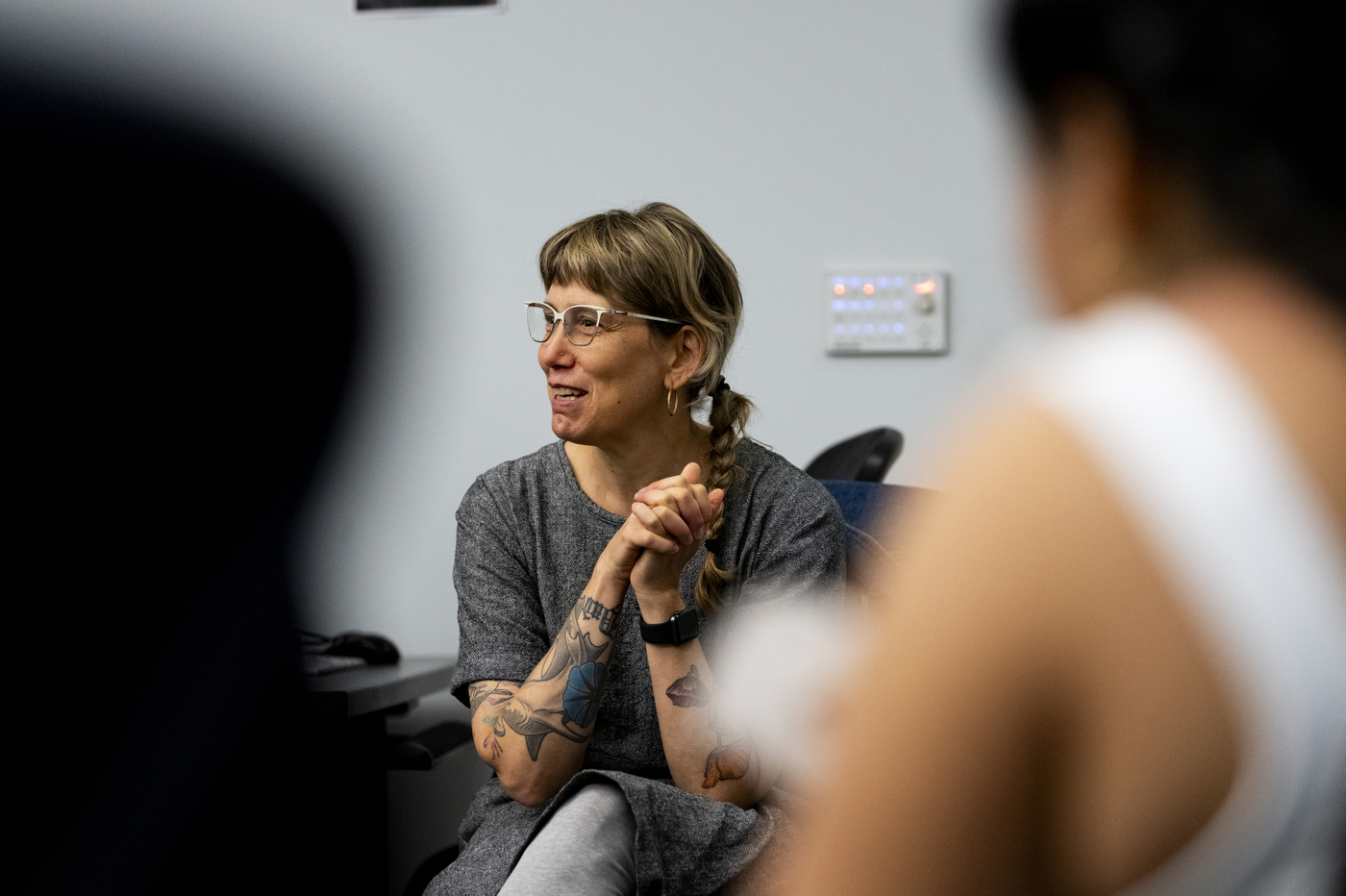
Next up is a tutorial on lighting. Hechtman pulls out kits for four small lights from the university’s equipment library, demonstrating how they work and giving a rundown of the effects they create. One, for example, has shutters on all four sides called “barn doors” that “really enable you to lead the light to a particular location,” — tunneling in on a person’s face, or directing the audience’s attention to an apparition in a corner of a room.
Another offers different colors and saturations, allowing the user to use warmer or cooler tones to light their subject depending on the desired effect. “You can really cool it off if you want it to be dead-looking or warm it up if you want it to look like it’s on fire. Two examples,” Hechtman deadpans.
The students form groups and experiment with each of the four lighting setups. They take turns posing for iPhone photos, standing tall with gnarled hands backlit in green or hunching over an electric piano keyboard with an exaggerated shadow.
In horror, lighting often serves to “limit the view of someone; it makes you so uncomfortable, and you don’t know why,” says Brochu. “You want to see more, but you’re as limited as the character in the film.”
After a few minutes, it’s time for the groups to rotate. “Swing your partner, do-si-do,” Hechtman calls. “Make sure that you switch who the talent is.”
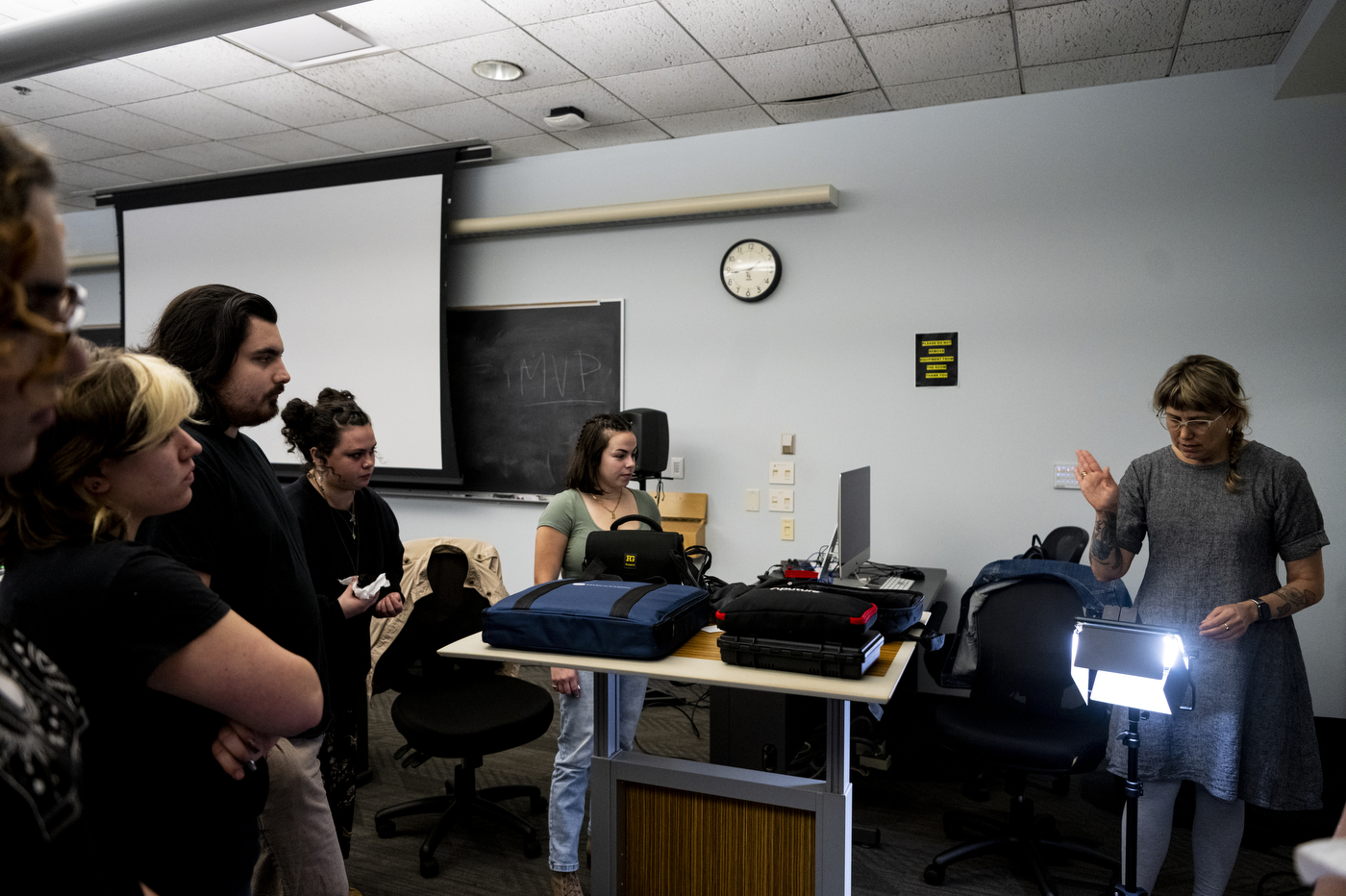
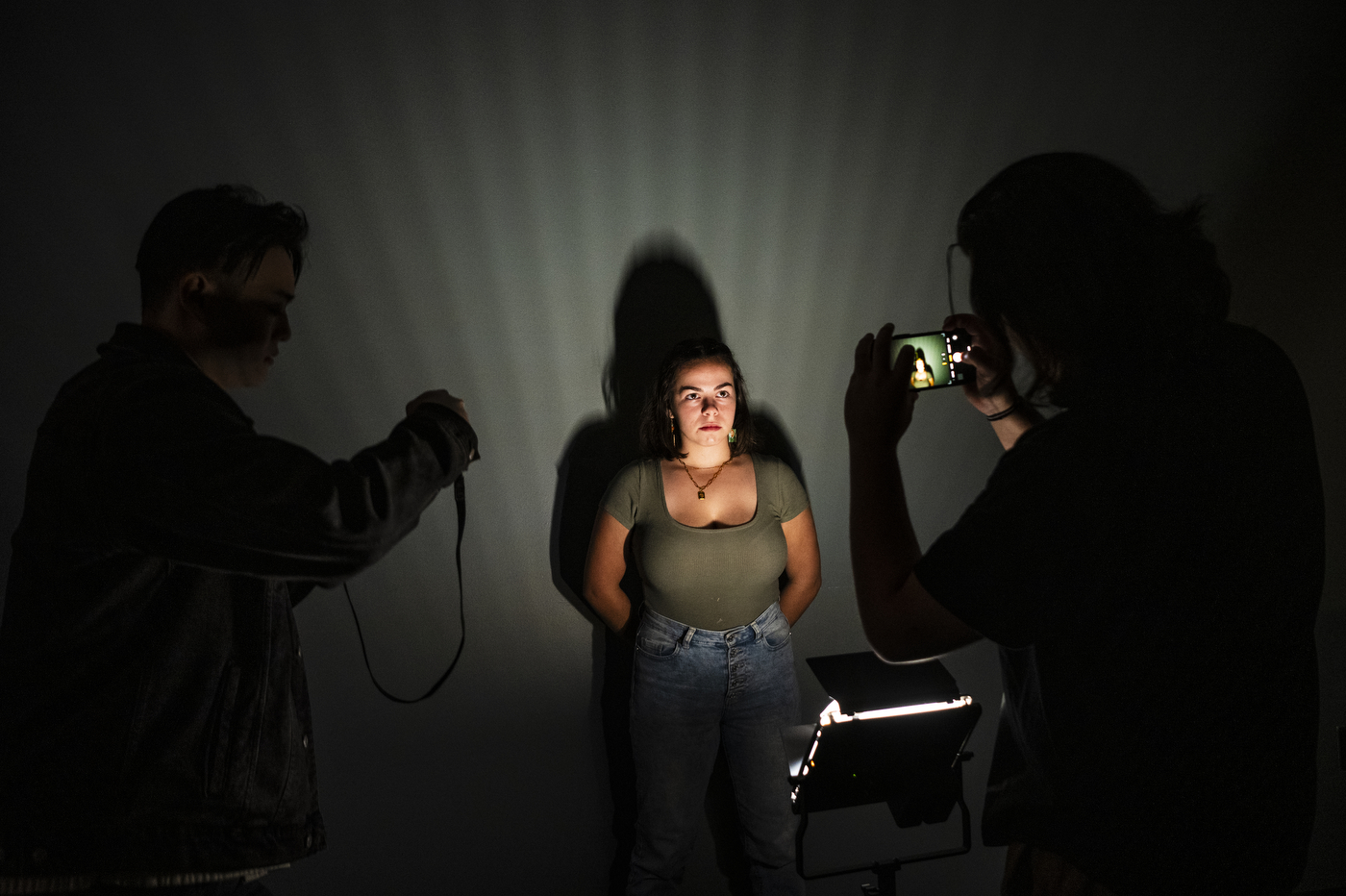
Gnarly tidbits
Afterward, the class settles into a discussion of the week’s homework assignment, George Romero’s seminal 1968 zombie movie, “Night of the Living Dead.” Each student has been asked to focus on a different element of the filmmaking — editing, sound, camera movement, wardrobe, right down to title sequences and end credits. For both this exercise and the technical instruction, Hechtman thinks, horror is an ideal subject. She has been fascinated by it for years — and ultimately designed a course around it — for a reason.
“What I really like about the horror genre is the exaggerated nature of it,” Hechtman says in an interview. “It’s easy for students to tease apart the lighting versus the color versus the sound versus the editing structure. Students will use that information to make their own films.”
Hechtman, a multimedia artist working primarily in video and sculpture, has been a teaching professor at Northeastern for 15 years. She’s also CAMD’s Associate Art + Design chair, with a hand in creating courses. Politics of Horror is part of a new, interdisciplinary “Topics in Media Arts” format that can fulfill a diversity of course requirements for a wide range of CAMD students and allow instructors to tailor courses around their specific interests.
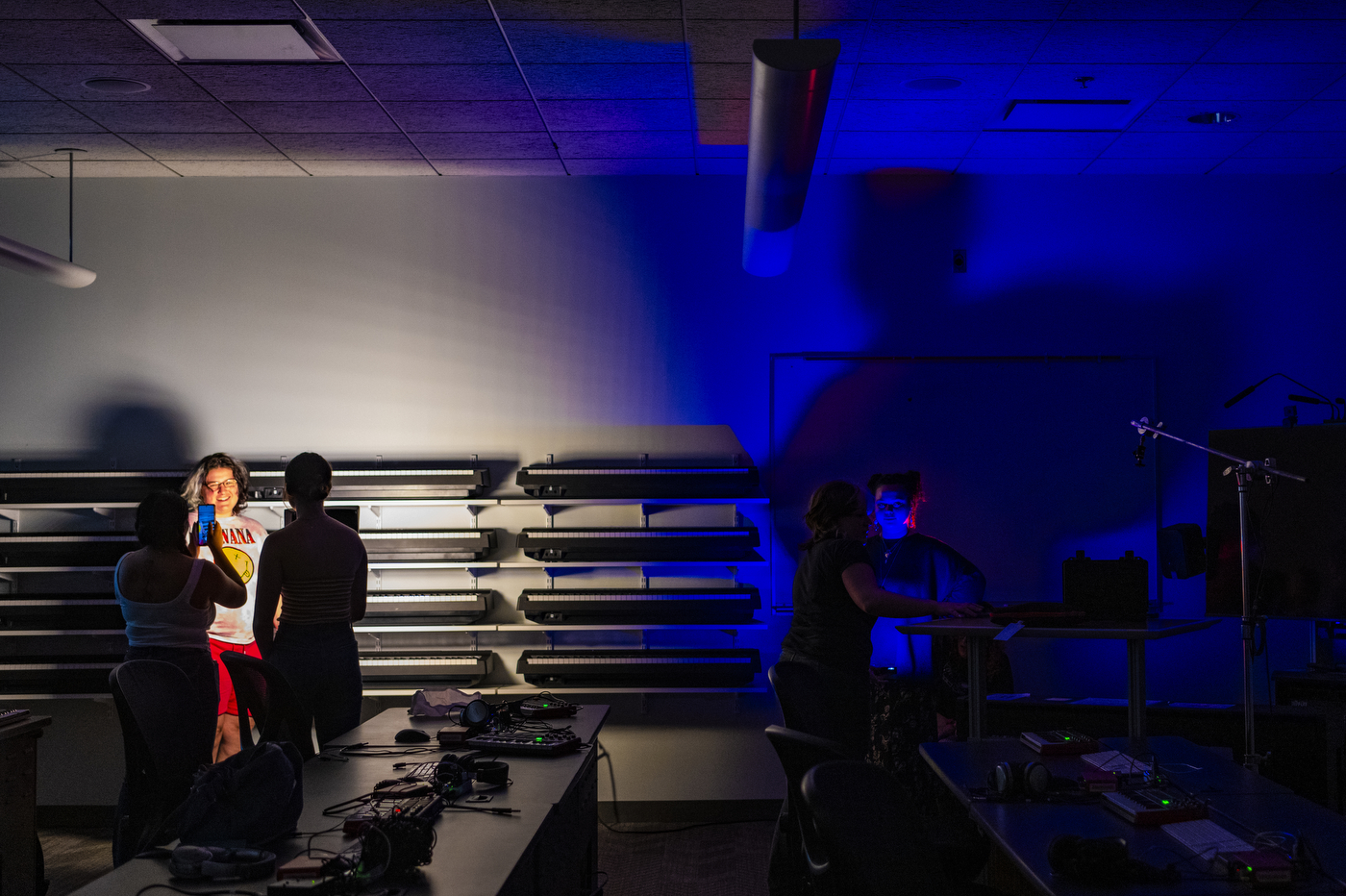
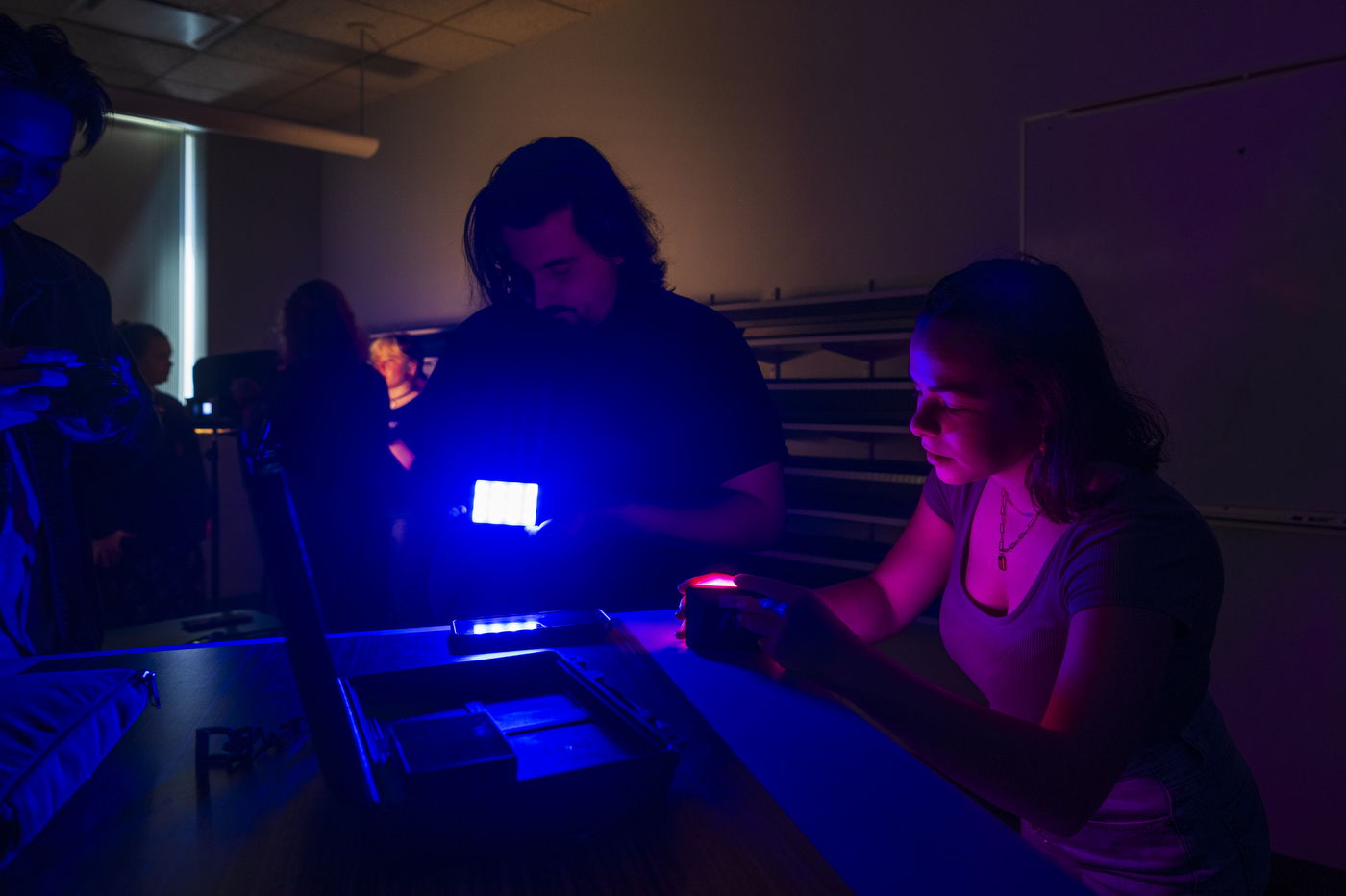
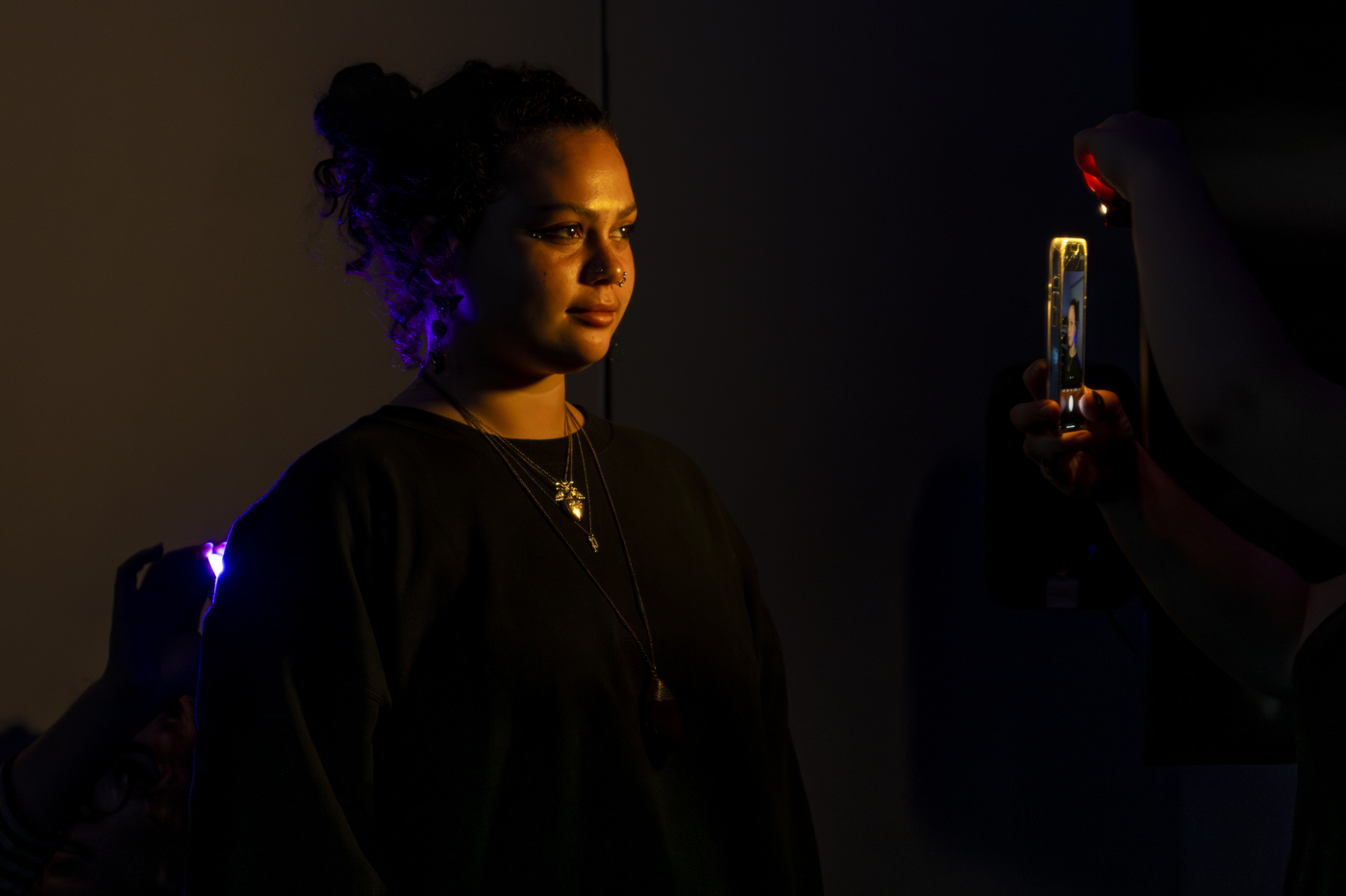
“I’m not a horror filmmaker, [but] I’m always looking at how far you can stretch a material, and the ideas behind why you would use a particular medium,” she says. Politics of Horror is reserved for upper-level CAMD students with varying levels of filmmaking and design experience, depending on their study concentrations.
“I really appreciate how passionate she is,” says Octavia Zagorec, a third-year design student taking the class. Hechtman takes special care to choose movies no one in the class has seen before, “so it’s a very new experience for all of us.”
Death preoccupies Hechtman in both art and life; she’s even trained at the University of Vermont to become a certified death doula. Horror provides a space where anxieties about that unknown frontier can be aired and explored. “It diffuses the tension of your own imaginings of the worst possible way to go,” she says. “I would hazard a guess that, like, the original ‘Texas Chainsaw Massacre is worse than most people’s actual experience.”
The idea for the segmented class discussions came from Hechtman’s own media consumption habits — she tends to watch movies over and over. While on a Fulbright grant in Iceland in 2019, she tasked herself with watching seven different horror movies seven times, focusing on a different element for each viewing. “I didn’t finish,” she admits, but it helped hone in on the idea of breaking films down to their component parts.
This makes for some pretty gnarly tidbits — the 2018 film “Hereditary” used a melon baller scraping the inside of a cantaloupe as a sound effect for a decapitation, for instance. “The sound design sells that movie,” Hechtman says.
Putting discussion into practice
In the class discussion, the students grapple with how those filmic elements inform the broader themes of movies and reflect the societal eras in which they were made. One student points out that “Night of the Living Dead,” for example, is largely set in a fussy cabin interior, with “grandma”-ish touches like doilies and an overstuffed floral couch. This serves to emphasize the horror when that comfortable world is overrun by zombies — a common device in apocalyptic narratives that reflect anxieties about the then-ongoing Cold War.
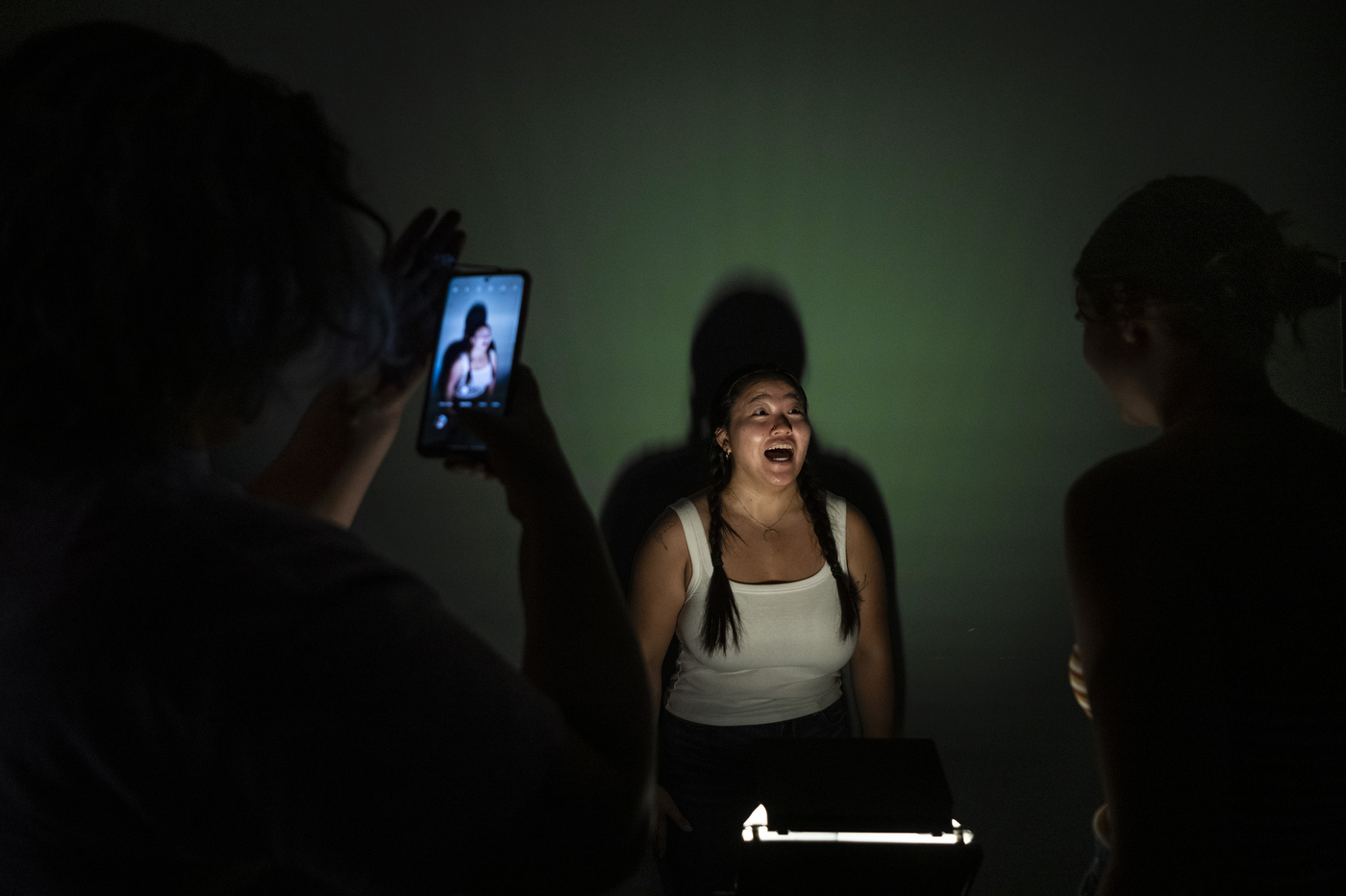
“The genre relies on an agreed upon normalcy that is being changed, right? In order to screw it up,” Hechtman tells the students. “Things change. We don’t need these doilies, now we just need to barricade the door and keep the zombies from eating us alive.”
The discussion then moves to the film’s complicated racial politics. Thanks to it featuring a Black actor in a lead role not specifically written for a Black person, “Night of the Living Dead” is widely interpreted as a statement on civil rights. But until his death, George Romero insisted there was no agenda behind the casting; that actor Duane Jones simply had the best audition.
“He was probably the only Black person on set there, too,” Hechtman says. “That is definitely something to keep in mind. This is different from Jordan Peele.”

The ultimate goal is to put the fruits of those discussions into practice — for students to pick up concrete snippets and devices to incorporate into their creations. In future semesters, Hechtman hopes to expand those assignments to include other media, like animation and video games.
For Zagorec, who has no prior filmmaking experience, the class is both an opportunity to pick up broadly useful skills (like using sound editing software) and a welcome counterweight to her other technical coursework, much of which is done on the computer. “I’m physically moving around more,” she says. Friends are already asking if they can be in her horror movie.
Brochu is more seasoned: she’s co-oped on a major movie set and as a videographer for an engineering firm. But she tends to gravitate toward uplifting, aesthetically pleasant documentary subjects; Politics of Horror has given her new, drastically different tools to bring to that milieu. And she has the perfect setting for her final project. “I just moved into a new apartment, and I have a crawlspace in my room,” Brochu says. She’s already shut herself inside (terrifying enough) to play around with effects, moving lights around the rim of the door to make it look, from the outside camera’s vantage point, that something was moving around inside.
I cannot live here and not put my crawlspace in a horror short,” she laughs. “I’m committed to it.”
Schuyler Velasco is the campus & community editor for Northeastern Global News. Email her at s.velasco@northeastern.edu. Follow her on X/Twitter @Schuyler_V.





